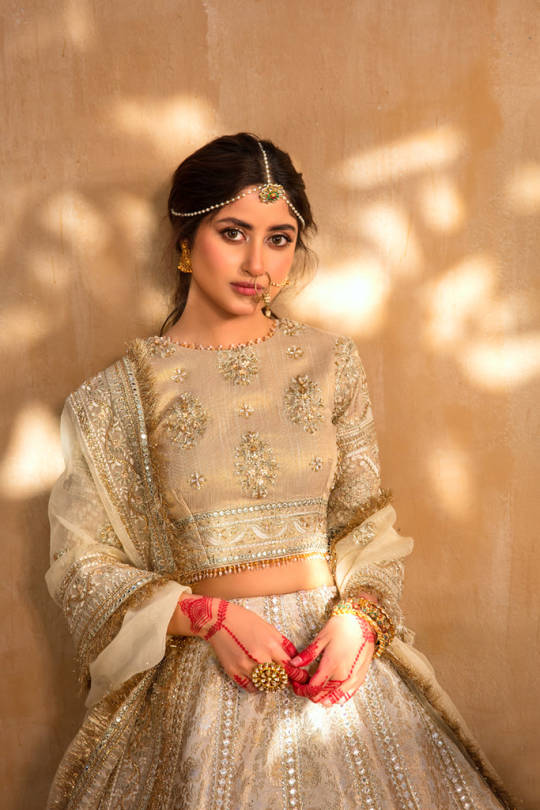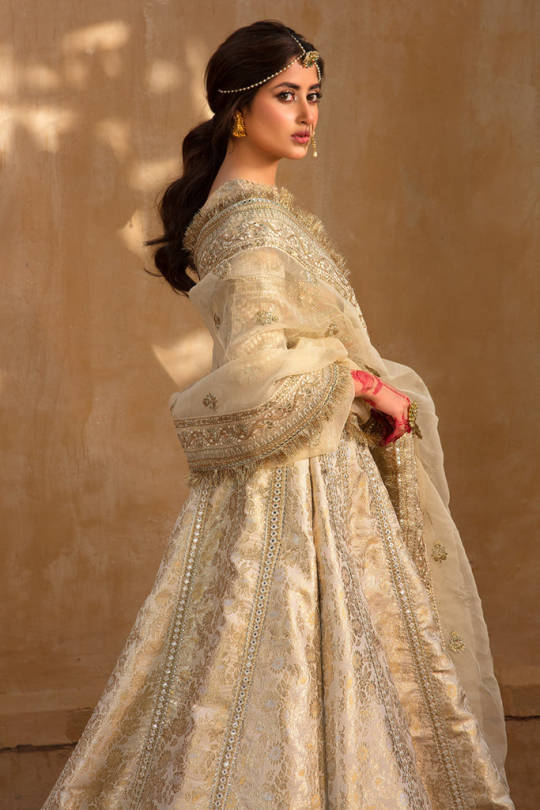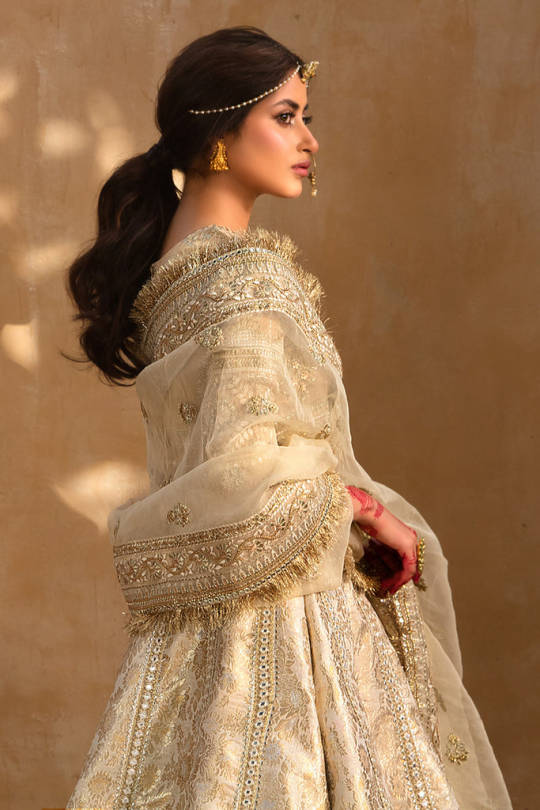#pakistani clothes in mississauga
Text







Qalamkar Cream White Choli Lehenga for $375 now available in small size. Visit https://www.dotnlo.com/ today to get one for yourself.
#pakistaniclothes#lehenga choli for girls#lehengadesigns#lehengacollection#designer lehenga choli#white clothes#indian clothing#desi clothes#pakistani clothes in mississauga
6 notes
·
View notes
Video
youtube
Pakistani Lawn Suits - Latest Designer Kurti Collection - 100%Original B...
#youtube#gul ahmed lawn sale 2022 with price online#pakistani clothing store#pakistani clothing mississauga#pakistani clothing haul#ladies clothing brand#pakistani lawn suits#Branded Pakistani Lawn#GulAhmed Lawn#maria b lawn suits#3 piece lawn suit wholesale#Pakistani online shop#Pakistani Online Ladies Shop in USA#branded handbags online#cheap womens clothes#trendbynoor#customize stitching#best clothing sites#zara online sale#gul ahmed sale 2022#gul ahmed sale#DARAZ 11 11
0 notes
Photo

#pakistaniwedding #Pakistani #dresses #clothes #bridal #formal #sale #discount #canada #toronto #brampton #mississauga www.hinab.com https://www.instagram.com/p/BzfNExFBjJs/?igshid=1v40gjpb8w45d
#pakistaniwedding#pakistani#dresses#clothes#bridal#formal#sale#discount#canada#toronto#brampton#mississauga
1 note
·
View note
Text



Aqsa Parvez was a 16-year-old girl who lived in Mississauga, Ontario, Canada. She was a student of Applewood Heights Secondary School who grew up in a Muslim family of Pakistani origin.
As she grew up, Aqsa clashed with her strict family over her desire to wear western clothing and not wear the hijab. In December of 2007, Aqsa moved in with the family of her neighbour, Lubna Tahir, in an attempt to escape the escalating tension with her family. But the following week, on the 7th of December, Aqsa was lured back to the family home by her brother, Waqas Parvez, who told her she could come home to get some clothes. However, upon entering the home, Waqas strangled his sister to death; his DNA was found underneath her fingertips indicating she had attempted to fight back.
20 minutes later, Asqa’s father, Muhammad Parvez, called the police and claimed that he had killed his daughter. Asqa’s brothers and sisters told police that Waqas was at work at the time of the murder but the DNA proved otherwise. Moreover, Waqas had told a colleague just days previously that he was going to kill his sister because she caused the family embarrassment. Several of Aqsa’s friends came forward and told police that her father frequently threatened her for her reluctance to confirm to their lifestyle. Following the arrests of Waqas and Muhammad, during a police interview with Aqsa’s mother, Anwar Jan, said her daughter would still be alive if she listened to her family.
In June of 2010, Muhammad Parvez and Waqas Parvez pleaded guilty to second-degree murder and were sentenced to life imprisonment with no eligibility for parole until 2028. Muhammad died of natural causes in 2017.
247 notes
·
View notes
Text
colourism/artsists researched
waseeka nahar and zainab anwar
If you have logged onto Facebook in the last two days, chances are that you have already seen the illustration we are talking about. In a world obsessed by fair skin, 'Dark and Lovely' is a stunning piece of art that is reigniting the very important discussion around colourism and global beauty standards. The illustration shows a dark-skinned woman holding a tube of a face cream called 'Dark and Lovely' - a powerful image that turns the idea of equating fairness with beauty on its head

Created by Bangladesh-based artist Waseka Nahar, the digital illustration was inspired by a picture originally clicked by and featuring Zainab Anwar, a Pakistani artist based in Canada.
"Discrimination based on your skin colour is still prevalent. And fairness creams add fuel to the fire," 25-year-old Waseka tells NDTV. "Through my artwork I want to address colourism."
"Zainab's picture symbolises that there is a certain 'stigma' - for lack of a better word - surrounding dark skin. The picture boldly says that dark skin is as beautiful as its counterpart," says Waseka.
The photograph in question was shared by Zainab on Instagram two days ago.
"I took this image in my bedroom by self timing my camera," Zainab tells NDTV. "The social message behind this is specifically directed to the Indian subcontinent which is why I am in traditional attire."
Ask her what inspired her to click the picture and Zainab says: "Growing up I had faced scrutiny for being "dark" and my relatives would give me fairness creams. Thus, I thought of creating a tube with the opposite idea to make people question this whole industry which is promoting so much negativity and ultimately leads to greater issues such as racism."
Since being shared on Facebook, Waseka's illustration has collected over 3,000 'shares', 4,000 'likes' and a lot of love online. "Breaking stereotypes and how!" writes one commenter. "Embrace your melanin," says another.
"The newer generation is more aware and is fed up of illogical beauty standards. I knew there would be support from the younger generation," says Zainab.
"I am truly speechless. I'm glad this has gone viral because now we can open up a conversation about acceptance and loving yourself as you are," concludes Waseka.
NDTV.com. (2020). Dark And Lovely: The Stunning Artwork Going Viral, And The Pic That Inspired It. [online] Available at: https://www.ndtv.com/offbeat/dark-and-lovely-the-stunning-artwork-going-viral-and-the-pic-that-inspired-it-1919877 [Accessed 14 Jan. 2020].
MARIA QAMAR
aka hatecopy
Maria Qamar is an artist and author of the book Trust No Aunty.[1]
Qamar was born in Pakistan and moved to Mississauga, Ontario at the age of nine.[2] She is known for her satirical lens commenting on the hybridization of South Asian and Canadian culture. She uses a pop art aesthetic to create works that tackle themes surrounding her experiences of racism, the first generation experience, body shaming, classism, and the patriarchy.[3][4] Qamar gained popularity as an artist through her instragram page where she goes by the name of Hatecopy.[5] She has a following of over 125,000 people on her Instagram platform.
Qamar has sold work at exhibitions in Toronto, Los Angeles, New York and London. The Mindy Project creator and actor Mindy Kaling collects Qamar's work and her paintings decorate the set of The Mindy Project.[4][6]
Trust no aunty won the 2018 Kobo Emerging Writer Prize for humour.[7]
i like her work style mixing the traditional clothing and cultured style with present day issues along with old traditional comments. very similar to what im doing.
En.wikipedia.org. (2020). Maria Qamar. [online] Available at: https://en.wikipedia.org/wiki/Maria_Qamar [Accessed 14 Jan. 2020].
TARA AND ANOUSHKA
Last week, artist Tara Anand began posting curious illustrations to her Instagram: girls of varying brownness smiling as their eyes were shielded by Pantone color cards. Shade Card, an art series illustrated by Anand and captioned with poetry by Anoushka Agrawal, set out to explore colorism in the South Asian community.
Tan, 478C. Wheatish, 7644C. These women were paint chips.
And under each illustration was a poem about skin. How it feels, how it looks, how others see it, how we are punished and judged for it.
“She sat in front of the mirror in her button-down shirt, the table in front of her/Covered with hairpins, flower rings, jewelry, a pair of scissors/And bottles and bottles of peach-colored make-up. She closed her eyes as her face/Changed shades, getting lighter and lighter with every base.”
Kajal spoke with the poet behind the words, Anoushka Agrawal, about why she felt this project was so important.
“The primary motivation behind the idea of Shade Card was my personal experience as a dark-skinned girl,” Agrawal said. “For a long time, I grew up being very conscious of my complexion, either because I was teased about it in school or because of the snark comments adults around me made. It took me a long time to be comfortable with my complexion and to stop thinking of it as a weakness, and a lot of that was because I started understanding colorism increasingly as I grew older.”
The Shade Card series, Agrawal said, was about exploring colorism and how it affects us so deeply. Complexion and beauty “should have no correlation,” she says.
Check out every piece in the series below.
1.
Tired but happy, she took a sip out of her water bottle
And stepped out of her car. She walked to the lift of her building, her little
Earrings dangling from her ears as sweat dangled from the apex of her chin.
She had a big performance the following week, because of which her shin
Had begun to ache with the long hours of rehearsal, but she didn’t mind.
Her Indian classical dance form allowed her to leap, to fly, to find
Within her the beauty that she had for years not been able to trust.
When she danced, she transcended universes; reality turned to dust.
She straightened her kurta, wiped the moist off her cheek with her sleeve,
She shook the bag on her shoulder, to make sure she didn’t leave
Her ghunghrus behind. She stopped before the four lifts of her building’s lobby, smiling at the watchman
Who didn’t smile back. The doors of the lift opened; she entered and suddenly stopped, deadpan
When she heard the lady next to her speak. The lady was older, bigger, and had tremendously heavy make-up on;
She adjusted her ridiculously shimmery sari and looked at the object of scorn
In front of her, at the representative of the category of people that was inferior to her own. “Whose house do you work as the maid in?”
For a minute, the girl stared at her, confused. Then, glancing at her dark skin,
She understood the lady’s question. Not knowing what to say,
Last week, artist Tara Anand began posting curious illustrations to her Instagram: girls of varying brownness smiling as their eyes were shielded by Pantone color cards. Shade Card, an art series illustrated by Anand and captioned with poetry by Anoushka Agrawal, set out to explore colorism in the South Asian community.
Tan, 478C. Wheatish, 7644C. These women were paint chips.
And under each illustration was a poem about skin. How it feels, how it looks, how others see it, how we are punished and judged for it.
“She sat in front of the mirror in her button-down shirt, the table in front of her/Covered with hairpins, flower rings, jewelry, a pair of scissors/And bottles and bottles of peach-colored make-up. She closed her eyes as her face/Changed shades, getting lighter and lighter with every base.”
Kajal spoke with the poet behind the words, Anoushka Agrawal, about why she felt this project was so important.
“The primary motivation behind the idea of Shade Card was my personal experience as a dark-skinned girl,” Agrawal said. “For a long time, I grew up being very conscious of my complexion, either because I was teased about it in school or because of the snark comments adults around me made. It took me a long time to be comfortable with my complexion and to stop thinking of it as a weakness, and a lot of that was because I started understanding colorism increasingly as I grew older.”
The Shade Card series, Agrawal said, was about exploring colorism and how it affects us so deeply. Complexion and beauty “should have no correlation,” she says.
Check out every piece in the series below.
1.
Tired but happy, she took a sip out of her water bottle
And stepped out of her car. She walked to the lift of her building, her little
Earrings dangling from her ears as sweat dangled from the apex of her chin.
She had a big performance the following week, because of which her shin
Had begun to ache with the long hours of rehearsal, but she didn’t mind.
Her Indian classical dance form allowed her to leap, to fly, to find
Within her the beauty that she had for years not been able to trust.
When she danced, she transcended universes; reality turned to dust.
She straightened her kurta, wiped the moist off her cheek with her sleeve,
She shook the bag on her shoulder, to make sure she didn’t leave
Her ghunghrus behind. She stopped before the four lifts of her building’s lobby, smiling at the watchman
Who didn’t smile back. The doors of the lift opened; she entered and suddenly stopped, deadpan
When she heard the lady next to her speak. The lady was older, bigger, and had tremendously heavy make-up on;
She adjusted her ridiculously shimmery sari and looked at the object of scorn
In front of her, at the representative of the category of people that was inferior to her own. “Whose house do you work as the maid in?”
For a minute, the girl stared at her, confused. Then, glancing at her dark skin,
She understood the lady’s question. Not knowing what to say,
Agrawal, N. (2020). Tara Anand and Anoushka Agrawal’s Shade Cards Talk About Colorism Through Poetry - Kajal Magazine. [online] Kajal Magazine. Available at: https://www.kajalmag.com/tara-anand-and-anoushka-agrawals-shade-cards-talk-about-colorism-through-poetry/ [Accessed 14 Jan. 2020].
0 notes
Text
Runway
Lani Takes the Runway
St. Thomas Aquinas Secondary School’s cafeteria has been converted into a fashion show runway.
The nasty tables and flimsy chairs squeezes up against the walls and one another to make room for the large, ‘T’-shaped runway the school had rented and assembled and attached to the stage on the cafeterias back wall. Wooden steps on either side of the curtains lead up to the panelled stage where the models will emerge, walk down the grey and carpeted runway, pose and return.
Above the runway, the cafeteria’s skylight, casts the faces of the models and coordinators in a soft glow. The practice had come to an end, and the coordinators were discussing last minute changes, and reminding everyone of their next practice.
The actual ‘caf’, where the food is served from emits the din of students and the cooks pretending to clean.
John told me not to eat from this place.
That I’d be better off buying food from the soda machines and from the Harvey’s down the street.
I sit at the edge of the runway, banging my heels of my leather boots against the panels.
A group of coordinators shoot me loaded glances.
John had told me that the fashion class performed the fashion show as a class project that was their culminating mark. The best students in the class would make up teams, with themed fashions, create their outfits, find sponsors, and organize the show from top to bottom, and leave the funding to teachers and school the show.
One of them, a ratty faced girl who could use good a steak, points at my bare thighs and smirks as she and her face-painted friends stalk pas
I wrinkle my nose at the B.O. rolling off the sweaty Barbie-doll with the beret and over-sized hoop earrings.
I smooth crinkles out of my shirt, and lean back, tuning out whatever they’re saying.
As if I could give a fuck what they think.
I’m the Hawaiian Angel, and I don’t really care what a B-town-hair-salonist-to-be thinks about how I dress.
The models are leaving too.
Most are headed through the front, but another, alone, is headed to the back, where the Pepsi machines are.
I know her.
Again, John is my main source of information for this part of the GTA.
I like Mississauga better.
It’s faster.
Coming to Brampton feels a lot like going to the sucky parts of Honolulu.
Slow, like soup.
Her name is Lisa.
She’s a soccer player.
An artist.
Plays volleyball and basketball too.
And she’s good too apparently.
Super smart.
John’s out of his league.
She’s pretty.
I think she’s Indian.
Or Pakistani.
Doesn’t matter.
She’s got nice skin, and walks like she’s been on the runway forever.
Every step is an effortless measured declaration of her confidence in herself.
It's alluring.
But she’s not my type.
I like my girls stupid.
But for John, smart is good.
I smile.
He’s out of his league.
I’d had my doubts, and I know he needs this.
He needs to know he can do this, but she’s out of his league.
This is going to be better than sex.
I see him, still in new clothes.
I still find it hard to believe he’s a model.
After I’d laughed at him, he’d shown me the pictures on that stupid Facebook.
Surprisingly, they were good.
I watch him, with a sure smile, jog after her, and realize, he might surprise me yet.
She turns when he greets her, probably with a soft, “Hey.”
She smiles back at him.
Good, John.
He meets her eyes, and says something.
She looks surprised, grins, and laughs, replying.
Lisa doesn’t notice, but I do.
He flinches.
Crash-and-burn.
He keeps it together, still smiling.
I can’t watch.
I pull out the Fairweather ad, and push my sunglasses higher up into my bangs. The glossy pages hide a Fairweather ad with leather jackets.
Lani wants.
Lani wants real bad.
And maybe a dress or kicks from Le Chateau.
We’re pretty much alone now.
Just me and John in the cafeteria as Lisa keeps walking.
The stupid sap.
So stupid.
I watch him jog up to me, a crooked smile on his face.
Lisa, her dark brown streaming behind her, gracefully leaving the caf to us.
“Nice shirt," he says.
I hold up the black and white striped cuffs and smile.
“Thanks. How’d it go, Mea Aloha?”
His eyes dart to the left and right, and he pulls out his cellphone.
“I got it!”
Wow.
He did it.
“Good job, man. I doubted you for a sec-“
I see his face.
It changes, and I hate myself a moment for having seen this.
“But she laughed at me, and asked, ‘Is this a dare?’”
Oooooooooooooh shit.
“Shit, boy. “
Shuffling, he climbs up beside me.
I can’t blame her though.
But it was his first time.
But that was harsh.
“I know you were scared man, bu-“
He shakes his head.
“Yeah, Lani, I’m never going to do that again.”
I sigh, and pull his forehead to mine.
“There’s always tomorrow.”
He smiles weakly, and my heart aches.
“I’ll pass.”
His hands are shaking.
I kiss him on the forehead, and look into his eyes.
Tired and sad.
I grin at him, “Are we still going shopping?”
“You’re a biiiiiiiitch.”
I laugh.
“You promised.”
John tries to look indignant, to put on his serious mask.
So I poke him in the stomach.
“Alright, alright!”
I smile, and watch him grab his backpack.
When he returns, I’m already moving toward the front doors.
He looks at me, and frowns.
“I saw you were sitting near Cynthia and them. Was everything okay?”
I give him a sweet smile, showing all my teeth.
“You know I make friends everywhere!”
He nods, assured, and I follow him out of the school, and try to walk like I’m on the runway.
0 notes